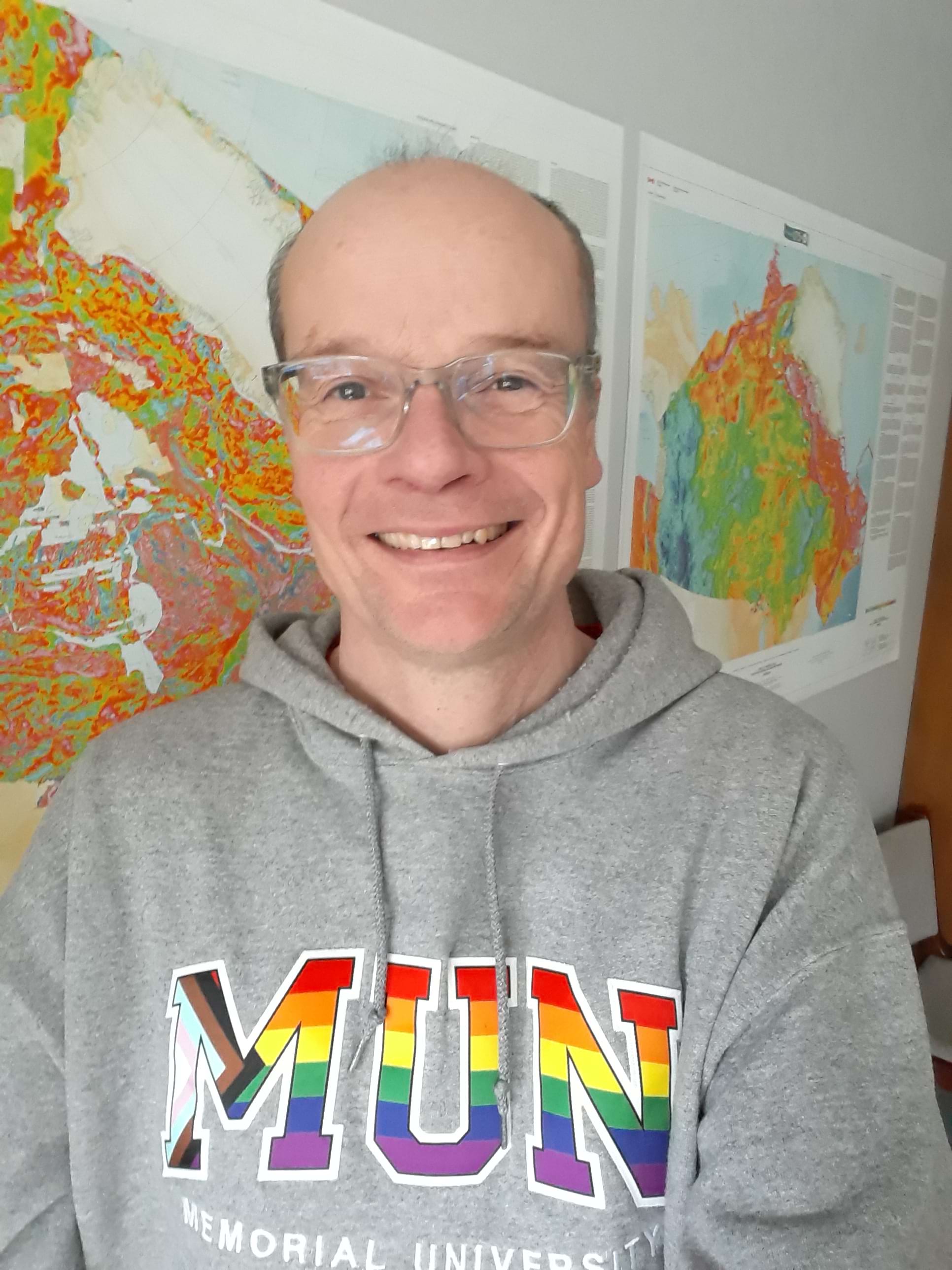Spring, 2024
 Geophysics professor has the key to determining how deep down a mineral deposit might be without digging a hole.
Geophysics professor has the key to determining how deep down a mineral deposit might be without digging a hole.
Geophysicist Colin Farquharson is a mining executive’s dream come true and maybe even a godsend to a detectorist with deep pockets.
The professor at Memorial University’s Department of Earth Sciences can take the data from geophysical tools that collect information on everything from metallic ore deposits to water sources and determine how deep these prospects are, unlocking great potential for whomever has asked him to do so — or at least information on whether they should pursue a specific site.
“Any scenario where you want to figure out what’s down in the ground without digging a hole — that’s where geophysics comes in,” Farquharson explains.
The equipment used by prospectors is often a helicopter that slings out a loop-shaped transmitter that’s 20 metres in diameter. The transmitter loop has electric current running through it and will offer a response if the helicopter happens to fly over, for example, an ore deposit, even if it’s embedded in rock.
“Metallic ore deposits tend to have a higher electrical conductivity than the rocks they’re sitting in, so they can conduct electricity, which is a bit surprising but true,” he says. “So these are geophysical methods where it’s exactly like the metal detectors people use when they’re trying to find relics and treasure.”
The main application for what Farquharson does is mining, but there are others, too. Often, instead of precious metals, geophysical equipment is used to look for sources of water, particularly in developing countries that might have fresh water aquifers near the coast with ocean water causing problems by creeping in.
Once the equipment determines there is something desirable there, the next thing the prospectors want to know is how hard it’ll be to unearth.
“People want to know how deep those deposits might be to determine whether it’s worthwhile pursuing,” Farquharson says. “That’s where computer modelling comes in. We use the information to calculate synthetic data.”
But making those calculations can be expensive and computationally challenging so Farquharson takes advantage of the high-performance computing power offered by ACENET.
“We can do in hours what would otherwise take weeks and weeks,” says Farquharson, who often gets his graduate students to run the datasets. “Some of the datasets are rich. Even on ACENET some of my students find it’s taking a few days to do these computations.”
He says the support services ACENET provides have been extremely useful to him and his students.
“It’s really valuable to me to have ACENET and the Digital Research Alliance of Canada, which both have big computers that are accessible for free. It doesn’t cost me anything for what I do, so it means I’m not spending thousands of dollars to do that part of my work.”